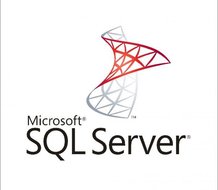Administering Microsoft SQL Server 2012 Databases

ABOUT THIS COURSE
This five-day instructor-led course provides students with the knowledge and skills to maintain a Microsoft SQL Server 2012 database. The course focuses on teaching individuals how to use SQL Server 2012 product features and tools related to maintaining a database. Also this course helps you prepare for the Exam 70-462.
All the labs for this course can be performed using the provided virtual machines. However, if you have a Microsoft Windows Azure account and the classroom virtual machines connect to the internet you may be able to connect to your Azure server and database from the classroom. Many of the labs in this course are enabled for you to perform the lab while connected to your own Azure database in the cloud. Your instructor should be able to provide a current list of Azure enabled labs. To acquire a trial Windows Azure account click here.
WHAT'S COVERED?
Below are the some of the new features of SQL Server that has been discussed in this course
This five-day instructor-led course provides students with the knowledge and skills to maintain a Microsoft SQL Server 2012 database. The course focuses on teaching individuals how to use SQL Server 2012 product features and tools related to maintaining a database. Also this course helps you prepare for the Exam 70-462.
All the labs for this course can be performed using the provided virtual machines. However, if you have a Microsoft Windows Azure account and the classroom virtual machines connect to the internet you may be able to connect to your Azure server and database from the classroom. Many of the labs in this course are enabled for you to perform the lab while connected to your own Azure database in the cloud. Your instructor should be able to provide a current list of Azure enabled labs. To acquire a trial Windows Azure account click here.
WHAT'S COVERED?
Below are the some of the new features of SQL Server that has been discussed in this course
- Discussion around servicing SQL Server (Service Packs, Cumulative Updates, Hotfixes)
- Understanding the relationship between the different levels of updates to the SQL Server product is very important for those working with it. The course now covers details on how hotfixes, cumulative updates and service packs are related and when to apply each type of update.
- SQL Server use of automated update
- SQL Server can now utilize Windows Update for servicing. The course shows how to enable automated updates and when the use of these updates should and should not be used.
- Partial database containment
- A significant challenge when migrating databases between servers is the management of objects such as logins that are not contained within the database. The course now discusses the partial containment options that are provided by SQL Server 2012. In particular, authentication-related changes are discussed.
- Users with passwords (contained users)
- The course shows how SQL Server 2012 allows users to be authenticated at the database level, rather than at the server level. This is an important first step in for database containment.
- User-defined server roles
- In earlier versions of SQL Server, user-defined roles could be created at the database level but not at the server level. In SQL Server 2012, user-defined roles can also be defined at the server level. This can help to increase the security of systems. Having the ability to configure more fine-grained permissions lets logins be assigned only the permissions that they need to do their work.
- In-place upgrades of data-tier applications
- In earlier versions of SQL Server, an upgrade of a data-tier application involved migrating all the data within a database to a new database. In SQL Server 2012 this is no longer needed and the course shows how data-tier applications can be upgraded much more quickly, and using less system resources.
- Appendix with intro to AlwaysOn, High Availability and Replication concepts
- Students who will be attempting the certification exam that is relevant to this course require knowledge of high availability and replication. In earlier versions of this course, none of these details were covered. In this version of the course, an appendix that covers the core concepts for high availability (including SQL Server 2012 AlwaysOn technologies) and replication is provided.